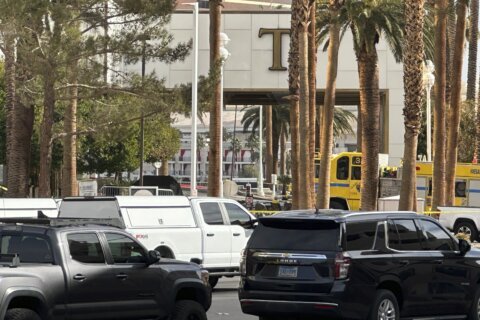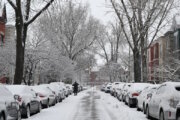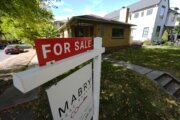KAKTOVIK, Alaska (AP) — The right to vote is considered sacrosanct in the U.S., but it isn’t always so in the tiny, remote Native villages across Alaska.
In these far-flung locations — well off any connected road systems, often accessible only by boats or small planes — challenges to voting abound. Mail and phone service can be unreliable, with severe storms or worker illness causing delays. Sometimes the polls simply don’t open if there’s no one trained to serve as an election worker, or if they don’t show up after being hired or quit before an election.
The result? Hundreds of people can be disenfranchised. That would shock politicians, voters and activists in any swing state, but it’s garnered relatively little attention outside the 49th state.
The Associated Press sent journalists in early October to one village above the Arctic Circle where the precinct failed to open for the August primary this year — Kaktovik, on an island just off the northern coast of Alaska — to take a closer look at the hurdles facing Alaska Native voters. Here are some takeaways from the AP’s reporting.
A lack of poll workers
Recruitment and retention of poll workers has been an ongoing problem statewide for the Alaska Division of Elections, but it can be especially challenging in Native villages, where the cost of goods is high and populations are small.
George Kaleak, a whaling captain and community leader in Kaktovik, blames insufficient pay as well as timing: The August primary arrives when many people are out hunting and fishing, on vacation or preparing for the upcoming whaling season.
Poll workers in Alaska can make $20 an hour, with precinct chairs, who oversee polling sites they’re assigned to, earning slightly more. Workers must commit to working a 16-hour day or to working a split shift, and they must attend a four- to five-hour paid training session.
Among the ways the state has tried to boost interest is a “youth at the booth” program, which seeks to involve older teenagers in working elections.
In Kaktovik, recent high school graduate Edwin Solomon has been considering it. He didn’t vote in the primary and looks at voting in the general election as his “first step into adulthood.”
A recurring problem
Polls not opening has been a recurring problem in rural Alaska. During the August primary this year, precincts in Wales and Kaktovik failed to open. They opened late in several other villages. In Anaktuvuk Pass, the polling place didn’t open until about 30 minutes before closing time; just seven of 258 registered voters there cast ballots in person.
In the 2022 primary, Tununak and Atmautluak didn’t open when workers failed to show up. Two others — Holy Cross and Venetie — didn’t have enough poll workers, but voters were able to cast absentee ballots in person.
In that year’s general election, polls in the villages of Teller and Nuiqsut didn’t open until about 3:30 p.m.
Alaska allows absentee voting, but that can present its own challenges given the sometimes questionable reliability of mail delivery in rural Alaska.
The U.S. Justice Department, which enforces federal laws that protect the right to vote, declined to comment about polling places failing to open in rural Alaska. But for years, pursuant to a court order, it has monitored elections in the state to ensure polling places provide language assistance to Alaska Native voters.
What’s at stake?
Alaska’s lone representative in the U.S. House is Democratic Rep. Mary Peltola — the first Alaska Native elected to Congress. She’s facing Republican Nick Begich in a tight race that will help determine which party controls the House.
Peltola is popular among Alaska Native voters and was endorsed this month by the Alaska Federation of Natives, the largest statewide Native organization in Alaska. She has suggested that the race with Begich could be decided by “dozens of votes,” making the possible implications of any voter disenfranchisement significant.
Is it being addressed?
State, regional and local officials all say they are trying to ensure everyone can vote in the Nov. 5 election. In a written statement, Carol Beecher, director of the Alaska Division of Elections, called her agency “highly invested in ensuring that all precincts have workers and that sites open on time.” She acknowledged it can be difficult to find temporary workers to help run elections in remote villages.
Michelle Sparck, with the nonprofit Get Out The Native Vote, said her agency has partnered with another organization and has found 11 volunteers who have been trained to work elections and are willing to fly to villages, if needed, next week. One is already committed to Craig, a community of about 1,000 people — about 17% Native — on Prince of Wales Island in southeast Alaska.
The North Slope Borough — akin to a county government in other parts of the U.S. — said it also is prepared to send staffers to Kaktovik or other villages that might need help opening precincts if the state fails to hire anyone. The borough, which includes Kaktovik, covers a vast swath of tundra nearly the size of Oregon.
___
Bohrer reported from Juneau, Alaska. Johnson reported from Seattle.
Copyright © 2025 The Associated Press. All rights reserved. This material may not be published, broadcast, written or redistributed.







